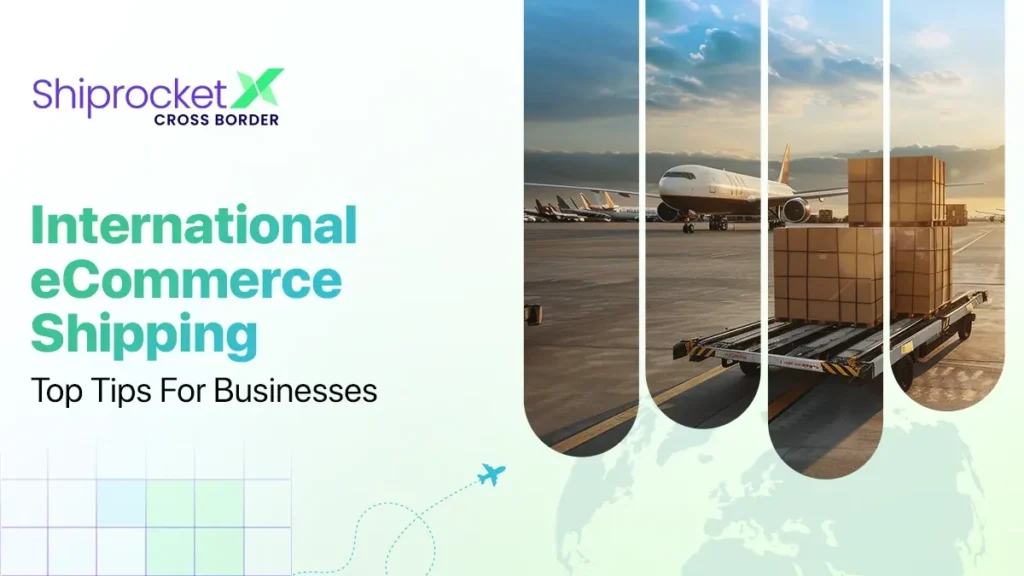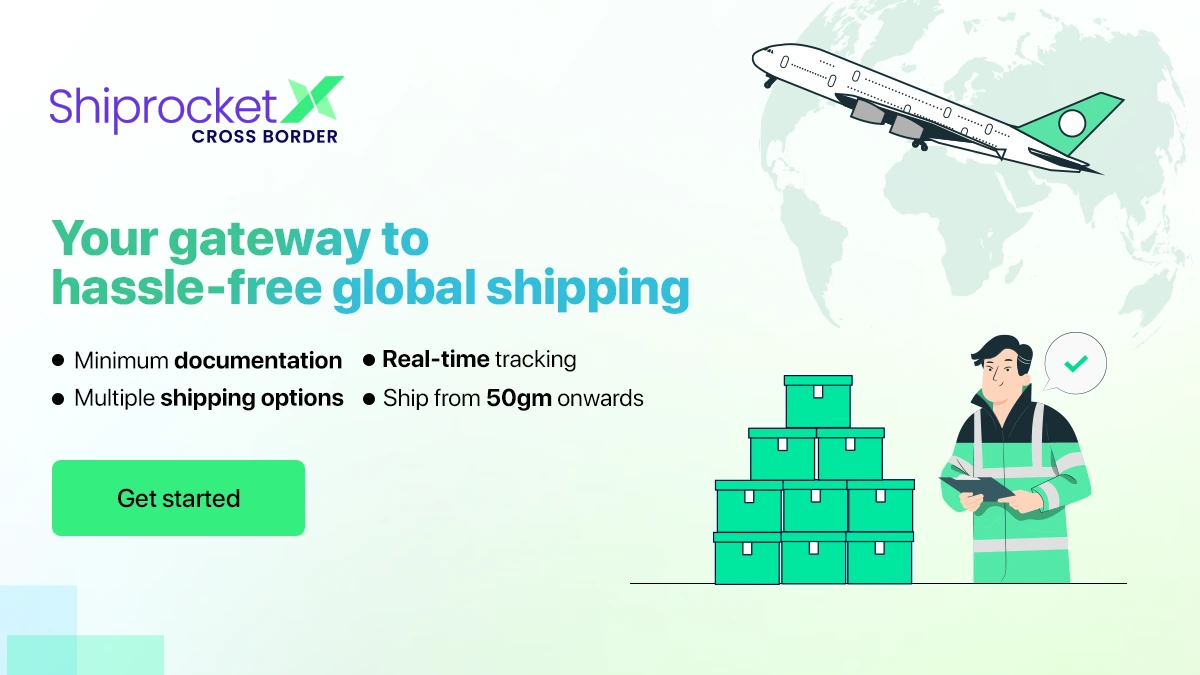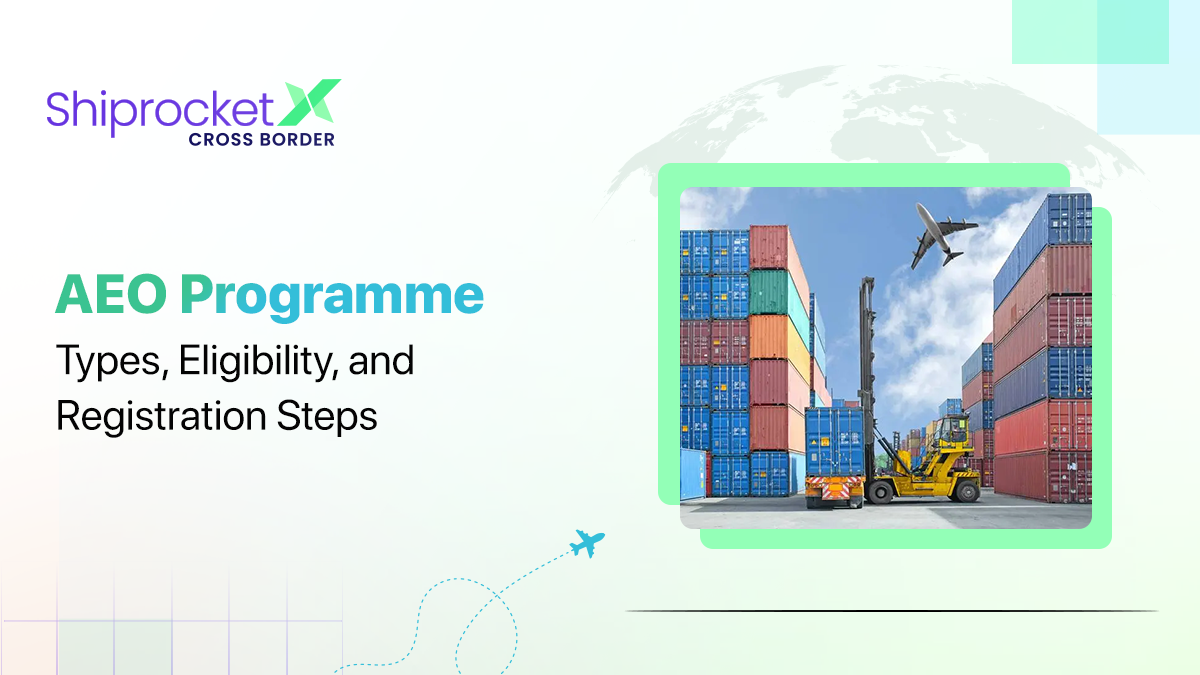Best Practices for International eCommerce Shipping
- eCommerce Shipping: Definition and Importance
- Best Practices Unveiled: 10 Tips for Perfect eCommerce Shipping
- 1. Understand your target market and audience
- 2. Offer multiple shipping options
- 3. Offer multiple payment methods
- 4. Understand international shipping regulations
- 5. Optimise packaging for international shipping
- 6. Automate the shipping process
- 7. Be transparent about delivery times and shipping costs
- 8. Use fulfillment centers
- 9. Simplify the returns and refund process
- 10. Choose the right international shipping partner
- ShiprocketX: The Leader in International Shipping Solutions
- Conclusion
Venturing into international eCommerce opens a world of opportunities for sellers, expanding their reach far beyond local markets. However, shipping internationally is complex, and filled with challenges and regulations. Imagine your customer from halfway across the globe excitedly orders a product from your store, anticipating its arrival. The process from that point—packing, shipping, navigating customs, and ensuring timely delivery—determines not just the customer’s satisfaction but also your brand’s reputation on a global scale. International eCommerce shipping does not only involve sending products from point A to point B but also offering an exceptional end-to-end customer experience.
This blog will explore the best practices for international eCommerce shipping, helping you streamline operations, reduce costs, and delight your customers worldwide.

eCommerce Shipping: Definition and Importance
International eCommerce is expected to grow at 20% annually until 2030. Despite the challenges and complexities involved with international shipping, it can be a stepping stone for online businesses to succeed.
So, what is international eCommerce shipping?
Well, as the name suggests, it is the process of transporting goods across borders, from one country to another. There are various methods to ship goods internationally. These include air, sea, rail, and road. One of the biggest benefits of international eCommerce shipping is that it enables you to reach foreign markets and customers. You can grow your business, increase sales, make more profits, and more.
However, international eCommerce shipping can be tricky. You may face some face challenges along the way. These include higher shipping costs, regulatory compliance, logistical complexities, lack of branding opportunities, longer delivery times, shipping errors, risk of loss or damage, etc.
You don’t have to worry though. You can overcome the obstacles if you just follow the tips listed below.
Best Practices Unveiled: 10 Tips for Perfect eCommerce Shipping
Let’s look at the top 10 tips most effective for international eCommerce shipping.
1. Understand your target market and audience
You cannot start international eCommerce shipping without having a complete understanding of your target market and audience. Customer behaviour, demands, preferences, and shopping patterns are rapidly changing. They have multiple options to choose from. Unless you understand what your customer desires, it’ll be nearly impossible to offer them a great shopping experience. If you fail to do so, your customers will find a brand that caters to their needs.
You can start by creating detailed customer profiles. List their expectations regarding delivery times, shipping costs, returns policies, etc. It can help you tailor your international eCommerce shipping strategies and meet the specific needs of your target audience.
2. Offer multiple shipping options
To meet different customer needs, you must offer multiple shipping options. Offering your customers the flexibility to choose their preferred shipping option can increase conversion rates. It’ll also have a direct impact on customer experience and satisfaction. Some examples of common shipping options include standard shipping, express shipping, pick-up and drop-off services, etc.
3. Offer multiple payment methods
Different consumers, different needs. Customers will abandon their cart if you don’t offer their preferred payment methods. You should also keep in mind that different countries have different payment methods. To ensure you cater to your international customers’ preferences, you must enable them to make payments via debit cards, credit cards, digital wallets, etc.
4. Understand international shipping regulations
International eCommerce shipping involves several legal and regulatory requirements. Before you step foot into international eCommerce shipping, it’s essential to completely understand them. You should familiarise yourself with customs duties, taxes, and other legal requirements of the international shipping destination. Not complying with these legal requirements can lead to heavy fines and penalties. You may not only end up upsetting your customers with delays but may also have to incur heavy losses.
You should also familiarise yourself with items prohibited for import in your target international destination. Though these can vary from one country to another, some common examples include firearms, narcotics, explosives, etc. You’ll also find that some items are not completely prohibited but are subject to some restrictions. These items include hazardous materials, agricultural products, pharmaceuticals, etc. You may even have to obtain a special license or permit to export these goods to some countries.
You should also stay up-to-date with any changes in import and export regulations. This also involves any trade agreements between the exporting and importing countries.
5. Optimise packaging for international shipping
Regardless of whether you’re shipping domestically or internationally, you need to package and label the shipment in a way that minimises damage and the risk of getting lost during transit. However, you’ll still have to be extra careful when shipping eCommerce shipments internationally.
Smartly packaging your shipment can help you reduce shipping charges and prevent damage during transit. To optimise packaging for international shipping, you can use packaging materials that not only protect the shipment but also keep its size, dimension, and weight to a minimum.
6. Automate the shipping process
Automation is the next big thing in the logistics industry. More businesses now use digital solutions to automate everyday shipping tasks. Automating the shipping process also stems from businesses’ lack of confidence in efficiently managing international shipments. And it helps them not only save time but also reduce costs. Some tasks you can automate include updating inventory status, tracking order numbers, generating order delivery reports, and more. Automating the shipping process can also help you eliminate manual errors and streamline the order fulfillment process. Automation apps and software can also help you track shipments, print labels, and handle returns effectively.
7. Be transparent about delivery times and shipping costs
You should aim to build your customer’s trust in your brand from their very first interaction. That’s why it’s important to be clear and transparent about the delivery times and shipping costs.
Before you can provide an accurate estimate of shipping costs, you must have a clear understanding of how much you’ll be charging, how much expenses you’ll have to incur, and how much profit you’ll make. You must factor in the cost of the product, packaging, international shipping, duties, and taxes. Don’t forget about the handling charges. Displaying the estimates for shipping costs (inclusive of customs, duties, and taxes), can help you prevent cart abandonment. It’ll also help you avoid any potential surprises for your customers. You can offer free shipping and simplify the buying process for your customers by incorporating the shipping cost into the cost of your product.
Setting realistic delivery expectations and providing accurate estimates can help you build customer trust from the get-go. Make sure you consider any potential delays when setting delivery times. It’ll help you minimise customer inquiries and even complaints.
8. Use fulfillment centers
It’s better to have inventory closer to your end customers if you sell fast-moving items in higher volumes to a particular location. Besides, having a fulfillment center in a location with a larger customer base can help you reduce delivery times. Eventually, you’ll be able to reduce shipping costs. Fulfillment by Amazon (FBA) is one of the best ways to deliver goods efficiently and quickly across borders. Using a fulfillment center will also enable you to store all your inventory in a single location.
9. Simplify the returns and refund process
Create a clear and transparent returns and refund policy. It’s an essential part of ensuring a positive customer experience overseas since it can have a significant impact on customer loyalty and satisfaction. That’s why your returns policy should be flexible. You can provide an extended return window for international customers compared to what you offer your domestic customers. To quickly process refunds, you can enable your customers to return items to their local fulfillment centers. It’s essential you have a clear understanding of the costs and logistics involved in the returns process.
10. Choose the right international shipping partner
Lastly, you must choose the right international shipping partner. Before you pick one, make sure to read online customer reviews and testimonials. It will help you gauge their reliability, experience, and expertise in handling international shipments. The shipping partner you choose will be responsible for safely and securely delivering your shipment to its destination on time.
You can also work with multiple shipping partners. However, you’ll have to consider both the pros and cons associated with working with multiple shipping carriers. Though it’ll help you save money, the process will be more complex. Working with multiple shipping carriers will enable you to offer several benefits to your customers.
The international shipping partner you choose will depend on your budget, business requirements, and customer expectations.
ShiprocketX: The Leader in International Shipping Solutions
Choosing the right shipping partner is essential to ensure international eCommerce success. With over 11 years of experience in logistics, ShiprocketX offers end-to-end cross-border solutions that can help you grow your business internationally. They offer an extensive range of specialised features and benefits, making it easier for you to expand your footprint across the globe and serve your foreign customers.
Here’s how ShiprocketX facilitates fast, secure, and reliable international shipping.
- It offers multiple shipping methods, tailoring its global courier networks to match your business requirements and offering end-to-end visibility
- It ensures effortless exports with hassle-free customs clearance, tax compliance, and transparent billing.
- Real-time updates will keep your customers informed through email and WhatsApp.
- It supports data-driven decision-making with an insightful analytics dashboard. You can view your shipping metrics, best-selling products, buyer persona, country-wise distribution, etc., on the ShiprocketX dashboard.
- It also enables you to build loyalty through a customisable tracking page. Here, you can showcase your logo, announce sales, recommend products, collect customer feedback, etc.
- You can also protect your shipments against in-transit risks and claim up to Rs. 5,000 in case your shipment is lost or damaged.
- ShiprocketX also assigns a dedicated account manager and ensures simplified returns management.
What’s more? You don’t have to worry about going out of budget. You can grow your business internationally at affordable shipping costs.
Conclusion
Adopting the best practices above can significantly enhance your operational efficiency and customer satisfaction. From choosing the right international shipping carriers and packaging materials to understanding customs regulations and optimising your logistics strategy, every detail counts. The competitive edge lies in your ability to offer seamless, reliable, and cost-effective shipping solutions. Leveraging the insights shared in this blog can help you navigate the complexities of international shipping with confidence, ensuring that your global customers receive their orders promptly and in perfect condition. As you refine your shipping processes, remember that the ultimate goal is to build trust and loyalty with your customers, making them not just buyers but advocates for your brand.






